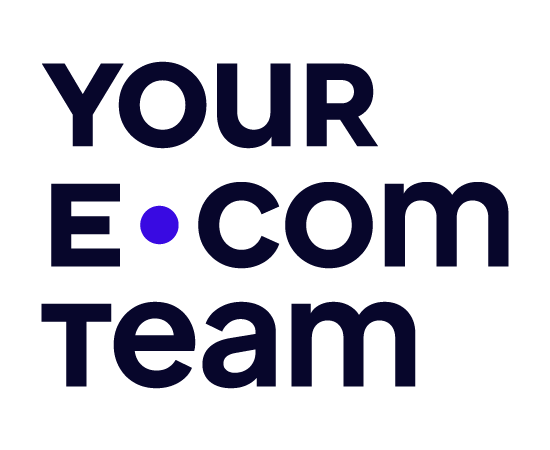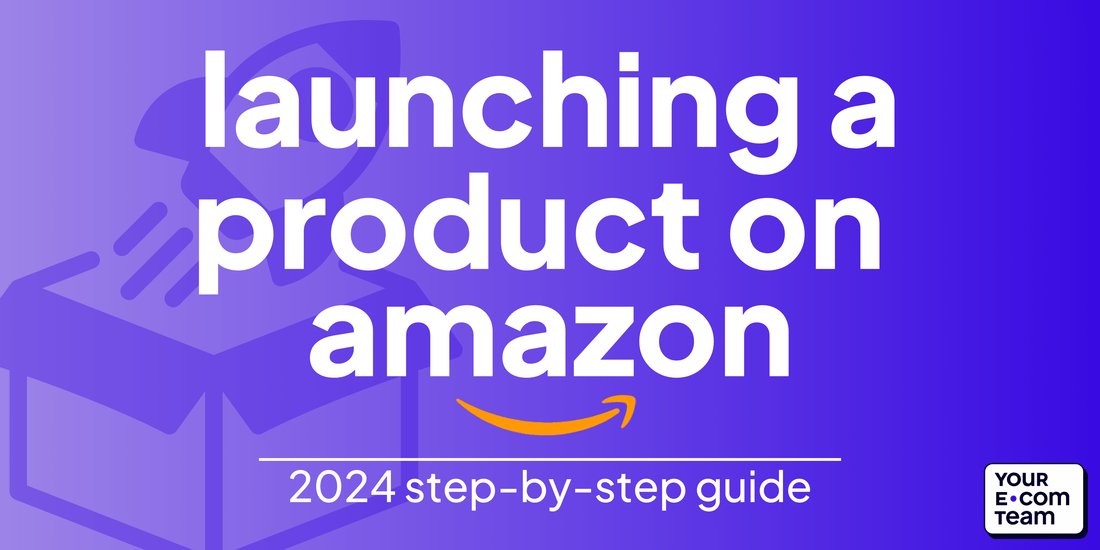When it comes to online shopping, Amazon is the go-to destination for millions. Its vast and trusted platform offers a golden opportunity for entrepreneurs to launch new products and tap into a massive audience. Think about it—where do you go when you need something fast? Amazon! If you're looking to expand your eCommerce business, launching a new product on Amazon can be a game-changer. It’s like setting up shop in the busiest mall in the world.
In this guide, we'll walk you through the steps on how to launch a new product on Amazon successfully in 2024.
Contents at a Glance
The Amazon Edge: Why Sell on Amazon?
- Massive Customer Base: Amazon's customer base is unparalleled, with millions of shoppers who rely on the platform for their needs. Many start their product searches on Amazon, making it the go-to place to introduce new products. When people are looking for something, they often head straight to Amazon. Your product can be right there, ready for them! Plus, with millions of Prime members who shop even more frequently, you have an even greater opportunity to reach a dedicated audience.
- Lower Startup Costs: Unlike traditional retail, you don't need to create a product from scratch. With Amazon, you can leverage existing products and brands, reducing initial investment costs. This means you can get your business up and running without breaking the bank. Why reinvent the wheel when you can improve on what's already out there?
- No Need to Build a Website: Amazon's robust platform means you don't need to invest in building and maintaining your own eCommerce website. This allows you to focus on other critical aspects of your business, like product development and customer service. Plus, with Amazon's reputation, customers will already trust buying from you, even if they've never heard of your brand before.
- Robust Fulfillment by Amazon: Amazon FBA provides a reliable and efficient fulfillment solution, handling storage, packing, shipping, and customer service for you. This allows you to scale your business without worrying about logistics. Imagine not having to deal with the hassle of packing boxes or handling returns—that’s what FBA does for you. It's like having a dedicated logistics team at your disposal, so you can focus on growing your brand.
Step-by-Step Guide: How to Launch a New Product on Amazon
Before You Start Selling
1. Conduct Market Research
Before launching a new product, thorough market research is essential. This step can make or break your success on Amazon, so it's worth investing the time and effort.
- Check Amazon's Restricted Products List: The first thing you need to do is ensure your product complies with Amazon’s guidelines. Some products are restricted or require special approval to sell. Familiarize yourself with Amazon’s restricted products list to avoid any issues down the line.
- Consider Private Labeling: Private labeling allows you to create your own brand with existing products. This can be a cost-effective way to launch a new product without the need for extensive product development. Look for products that can be easily rebranded and have a proven sales track record.
- Analyze the Competition: Understanding your competition is crucial. Look at similar products already available on Amazon. Examine their pricing, customer reviews, and overall market presence. Identify what they’re doing well and where there might be gaps or opportunities for your product.
- Focus on High Demand, Low Saturation Products: Use tools like Amazon’s Best Sellers and Movers & Shakers lists to identify trending products. Also, consider the barriers to entry—products that are easy to source, store, and ship are typically less risky and more profitable.

- Identify Keywords and Trends: Use keyword research tools to find out what potential customers are searching for. This will help you understand demand and identify popular trends. Look for keywords with high search volume and relatively low competition to give your product the best chance of being discovered.
- Evaluate Supplier Options: Having reliable suppliers is key to maintaining product quality and inventory levels. Research potential suppliers, compare prices, and request samples to ensure they meet your standards. Establishing good relationships with suppliers can also lead to better terms and support as your business grows.
- Understand Your Target Audience: Know who your ideal customer is. What are their needs, preferences, and pain points? Tailoring your product and marketing strategy to your target audience can significantly increase your chances of success.
2. Choose a Selling Plan
Amazon offers two selling plans: Individual and Professional. The Individual plan is great if you’re just starting out and plan to sell fewer than 40 items per month. The Professional plan, on the other hand, is ideal if you’re looking to scale quickly, as it offers more tools and benefits for a monthly subscription fee.

Gather Required Information
Before you sign up, make sure you have all the necessary information handy:
- Bank Account and Routing Number: For receiving payments from your sales.
- Internationally Chargeable Credit Card: This is used to pay for any fees associated with your account.
- Government-Issued ID: To verify your identity.
- Tax Information: Ensure you have your tax ID or Social Security number ready.
- Phone Number: For account verification and communication.
Understand the Fees
Selling on Amazon comes with various fees that you should be aware of:
- Subscription Fees: The Professional Plan costs $39.99 per month, while the Individual Plan charges $0.99 per item sold.
- Selling Fees: These include referral fees, which are a percentage of the total transaction and vary by category.
- Seller-Fulfilled Shipping Fees: If you handle your own shipping, you’ll need to account for these costs.
- FBA Fees: If you choose to use Amazon’s FBA service, you’ll need to cover fees for inventory storage, order handling, picking and packing, shipping, and customer service.
3. List Your Product
You can either match an existing listing or create a new one. For new products, you might need to purchase a UPC code or request an exemption.
A listing includes the following details:
- Product ID: GTIN (UPC, ISBN, EAN) if not matching an existing listing.
- SKU: Your unique product identifier.
-
Product Detail Page:
- Title: Up to 200 characters, capitalize the first letter of every word.
- Bullet Points: Highlight key features and benefits.
- Description: A detailed description of the offered product.
- Product Images: Use high-quality images (500 x 500 or 1,000 x 1,000 pixels).
- A+ Content: Enhance listings with rich text and images. Available for brand-registered sellers.
- Variations: Different colors, scents, or sizes.
- Price: Your product's retail price.
- Search Terms and Keywords: Include relevant keywords to improve visibility.

4. Choose How You'll Fulfill Orders
- Fulfillment by Amazon: Leverage Amazon's extensive fulfillment network for storage, shipping, and customer service.
- Fulfilled by Merchant: Handle storage and shipping yourself, with shipping rates set by Amazon based on product category and customer-selected shipping service.
Start Selling Your Product
1. Price Competitively
Staying competitive with your pricing is key. Use the Automate Pricing Tool in Seller Central to ensure your products are attractively priced. This tool can automatically adjust your prices based on the competition, helping you stay ahead without constant manual updates.
2. Offer Promotions and Coupons
Everyone loves a good deal! Promotions and coupons can incentivize customers to make purchases. You can offer money off, free shipping, or buy-one-get-one-free deals. Digital coupons are also effective, allowing you to provide percentage or money-off discounts. These strategies can drive sales and encourage customers to choose your product over others.

3. Ship Fast
Fast shipping is crucial for keeping customers happy. If you're using FBA, Amazon will handle quick and reliable shipping for you. If you're fulfilling orders yourself, ensure you have fast shipping arrangements in place. Quick delivery times can be a significant selling point and lead to better reviews.
4. Advertise on Amazon
Amazon offers several advertising options to boost your product's visibility:
- Sponsored Products: These ads appear in search results and on product detail pages, helping you reach more customers.
- Sponsored Brands: These ads showcase your brand and product portfolio, appearing in prominent positions on search results pages.
- Amazon Stores: Create a customized store for your brand to highlight your products and tell your brand story.

5. Advertise Beyond Amazon
Utilize external channels like social media to drive traffic to your Amazon listings. Amazon's Brand Referral Bonus program can earn you credits for external traffic that converts to sales.
6. Get Reviews
Customer reviews are vital for building trust and credibility. Encourage your customers to leave reviews by sending follow-up emails or including a note in the package. However, remember to play by the rules: don’t offer compensation, free products, or discounts in exchange for reviews. Genuine feedback will help build your product's reputation.

7. Monitor Account Health
Keep an eye on your account health in Seller Central. Amazon tracks performance metrics such as:
- Order Defect Rate: A measure of your customer service standards. Keep this below 1%.
- Pre-Fulfillment Cancel Rate: The rate at which you cancel orders before shipment. Aim for less than 2.5%.
- Late Shipment Rate: Orders that ship after the expected date. Keep this under 4%.
Maintaining good metrics is crucial for sustaining your seller account and ensuring customer satisfaction. Regularly monitoring these metrics will help you catch and resolve issues quickly.
The Bottom Line
Launching a new product on Amazon in 2024 offers a fantastic chance to expand your eCommerce business. By following the steps in this guide, you’ll be well on your way to mastering Amazon’s platform. From conducting market research to optimizing listings and choosing the best fulfillment options, every detail matters. Pair these efforts with Amazon’s robust advertising tools, and you’ll be set to maximize your sales potential.
Thinking eCommerce? Let's Talk!
Thinking about launching a new product on Amazon but not sure where to start? We’ve got you covered! At Your eCom Team, we specialize in making Amazon launches smooth and successful. From market research to listing optimization, we’re here to help.
Ready to launch? Get started today with a free brand review!
Frequently Asked Questions
What are the key steps to launching a new product on Amazon?
Start with market research, set up a Seller Central account, optimize your product listings, choose your fulfillment option, and use Amazon’s advertising tools.
Why use Fulfillment by Amazon (FBA)?
FBA handles storage, packing, shipping, and customer service for you. Plus, your products are eligible for Amazon Prime, which can boost sales.
How do I price my product competitively?
Use Amazon's Automate Pricing Tool to stay competitive and research similar products to set an attractive price.
What promotions can I use on Amazon?
Offer deals like money off, free shipping, buy-one-get-one-free, or digital coupons for discounts.
How do I drive traffic to my Amazon listings?
Use social media, email marketing, and your website. Amazon’s Brand Referral Bonus program can also help.
How important are reviews and how do I get them?
Reviews build trust. Encourage them by asking customers, but don’t offer incentives. Follow up with emails or package notes.



